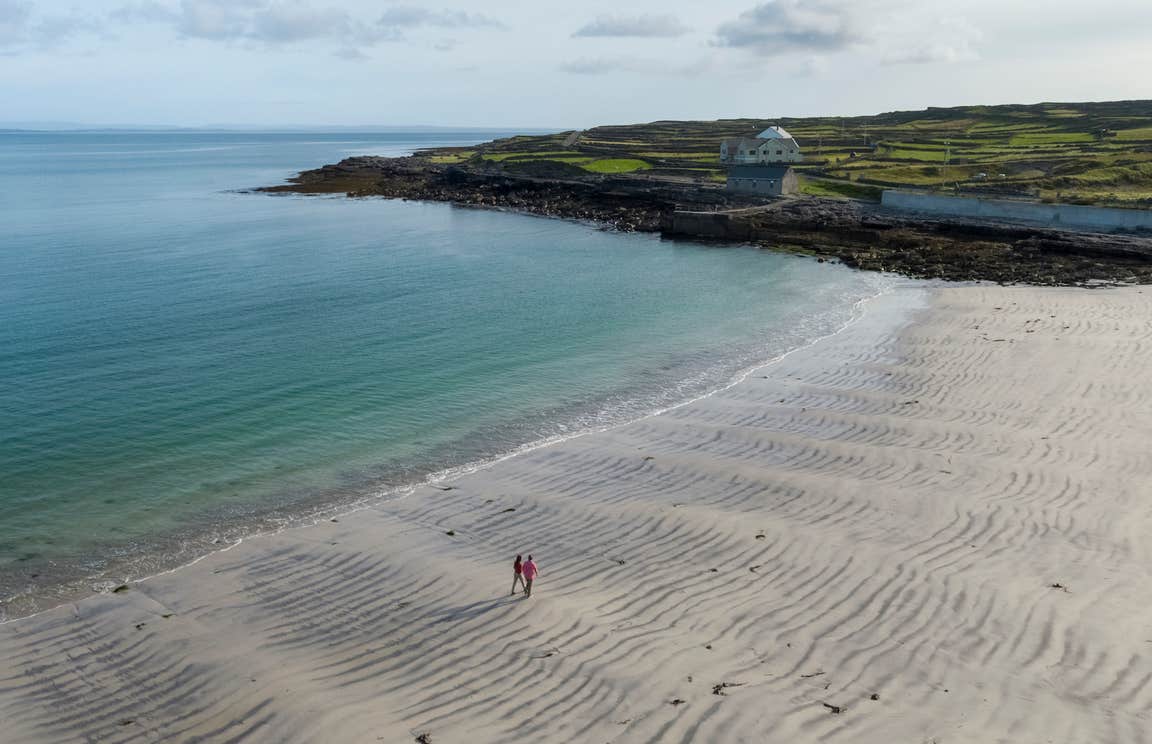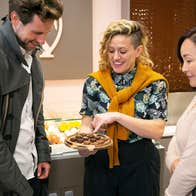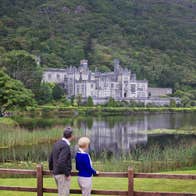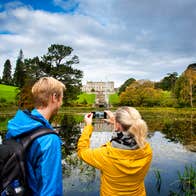Photo credit: @itsthelifeofrobyn
Get your sea legs aboard the ferry
The main departure point for Aran Island Ferries is Rossaveal, 38km west of Galway city, from which it’s a 40-minute trip across Galway Bay. The company puts on a shuttle bus (one hour) from Queen Street timed to coincide with departures. Between April and September, there’s also a daily sailing from Galway City Docks, only a 10-minute walk from Eyre Square. The sailing goes at 9.30am and takes around 90 minutes.
Quick tip: the boat trip can get a little bumpy, but if you’re concerned about sea sickness eat something with ginger in it beforehand (even a glass of ginger ale will help) and sit at the back of boat, where the effects of the choppy seas aren’t as noticeable.
All boats to Inis Mór dock at the pier in Cill Rónáin (Kilronan) on the southeastern side of the island. Most of everything you’ll need is clustered around the village, including bike rentals, which you’ll need if you want to make the most of your stay before the boat departs at 3.30pm sharp.
Cycle into prehistory
Inis Mór’s blockbuster attraction is Dún Aonghasa, the Iron Age fort built on the edge of the cliffs. It’s 7km southwest of Kilronan, on the other side of the island. There’s a few ways to get there: you can walk, ride in a traditional pony and trap or you could cycle. You can pick up all kinds of bikes (including tandems and e-bikes) from Inis Mór Bike Hire or Aran Bike Hire, which are right by the pier: as soon as you’re fitted you can start pedalling west along the road that skirts along the northern shore, past a vast patchwork of stone wall fields and scattered cottages.
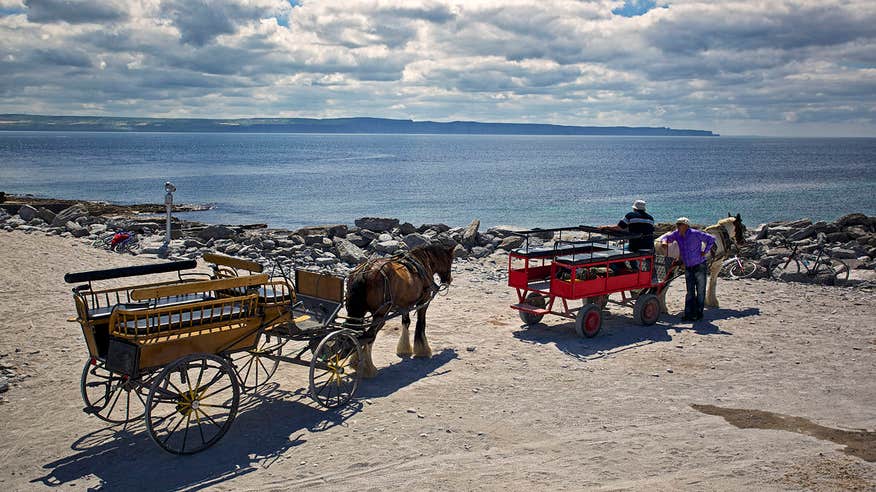
It should take you just under half an hour (faster if you’re on an e-bike) to get to Dún Aonghasa; along the way you’ll pass by crescent-shaped Kilmurvey Beach, whose pristine waters and nice white sand have earned it Blue Flag status.
Park your bike in the dedicated parking by the knot of shops, cafes and the small visitor centre that marks the main entrance to the ruins.
It’s a 1km walk up a rocky path (watch out as the rocks can get a little slippery) to reach the fort, the largest of the prehistoric remains on the Aran Islands and one of the most spectacular sites in Ireland. Three enormous concentric walls run right up to the cliff face that drops 87m into the churning Atlantic below.
Little is known about who built the inner enclosure, other than it was built around 1100BC. Legend has it that it was the mythological early settlers Fir Bolg (Men of Bags, named after their labour as enslaved people), who named it after Aengus, chieftain of the Clann Umoir. Two outer walls were added around AD 700, including the fearsome chevaux de frise, a portable defensive barrier made from densely packed limestone spikes. Stand by the cliffs and imagine what it must have been like for those who lived here all those thousands of years ago, right at the edge of the known world.
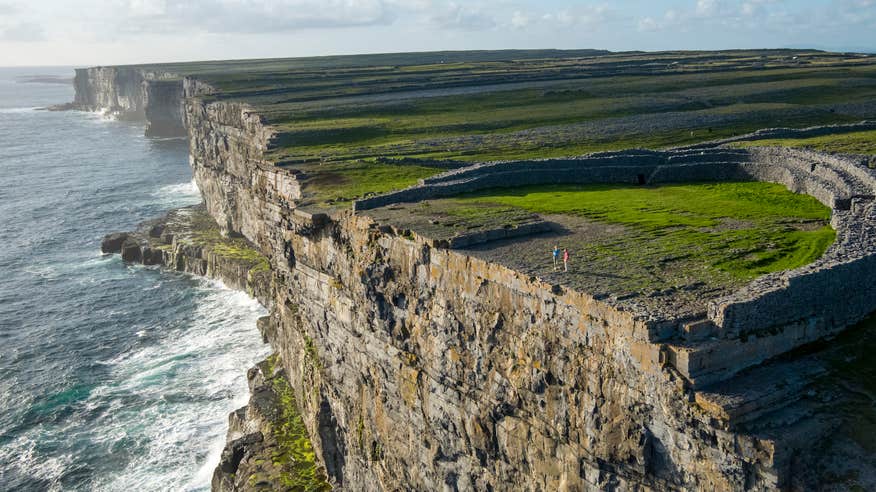
When you’re done, the cycle back to Kilronan should only take about 25 minutes. Remember that the ferry back to the mainland leaves at 3.30pm, but if you have time, you have a couple of choices: you can get a bite to eat, explore some of the shops in the village or do some more sightseeing.
If Dún Aonghasa is Inis Mór’s most popular site, then its under-the-radar gem is Dún Dúchathair, or the Black Fort. It’s about 3km south of Kilronan; go past the church and skirt around the little bay before turning inland where it’s signposted. The Iron Age fort features huge terraced walls surrounding the remains of a clochán, a beehive hut from the early Christian period. Like Dún Aonghasa, this fort is also perched on the edge of the cliffs; clearly those who built them wanted maximum security and privacy.
Where to eat on Inis Mór
By the visitor entrance to Dún Aonghasa is the simply gorgeous Teach Nan Phaidi, a whitewashed thatched cottage that just might be Ireland’s cutest restaurant. You can tuck into hearty meals including a beef and Guinness stew, but highly recommended are the cakes, made on site by the owner Catherine Concannon. If you can manage two desserts, keep some room for some ice cream from Paudy’s next door – it’s award-winning, as is proudly proclaimed on the wall outside.
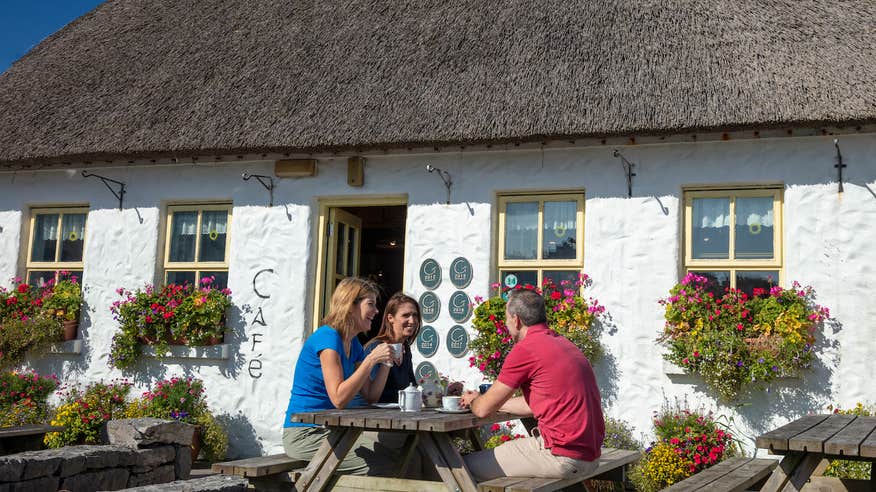
Tí Joe Watty’s Bar might be better known for its nightly trad sessions in summer, but it also does a fabulous menu of seafood, including oysters, mussels and a divine lobster pasta salad. If you prefer your dinner to be harvested on the land, they also do a nice steak – but only at dinner.
Back to Galway – via the Cliffs of Moher
While the trip to and from Rossaveal is direct all year round, the return trip to Galway city (running in the spring and summer months) takes around two-and-a-half hours because the boat takes a detour southeast toward County Clare and another megawattage attraction, the Cliffs of Moher. From the sea, Ireland’s most famous cliffs look even more imposing than they do from on high: the full 8km length of them is on full display, from Hag’s Head to the south up to O’Brien’s Tower (their tallest point) to the north. Grab a seat on the right-hand side of the boat for an unencumbered view – but you can also go out on deck to get that perfect shot.
An evening in Galway city
The boat arrives at Galway City Docks around 6pm – and if the day’s exertions haven’t completely worn you out then you’ve still got plenty of time for an evening out in town.
Food options are plentiful and invariably good. For high-end tapas at reasonable prices, there’s Cava Bodega on Middle Street, whose chef patron JP McMahon is also the owner of Michelin-starred Aniar.
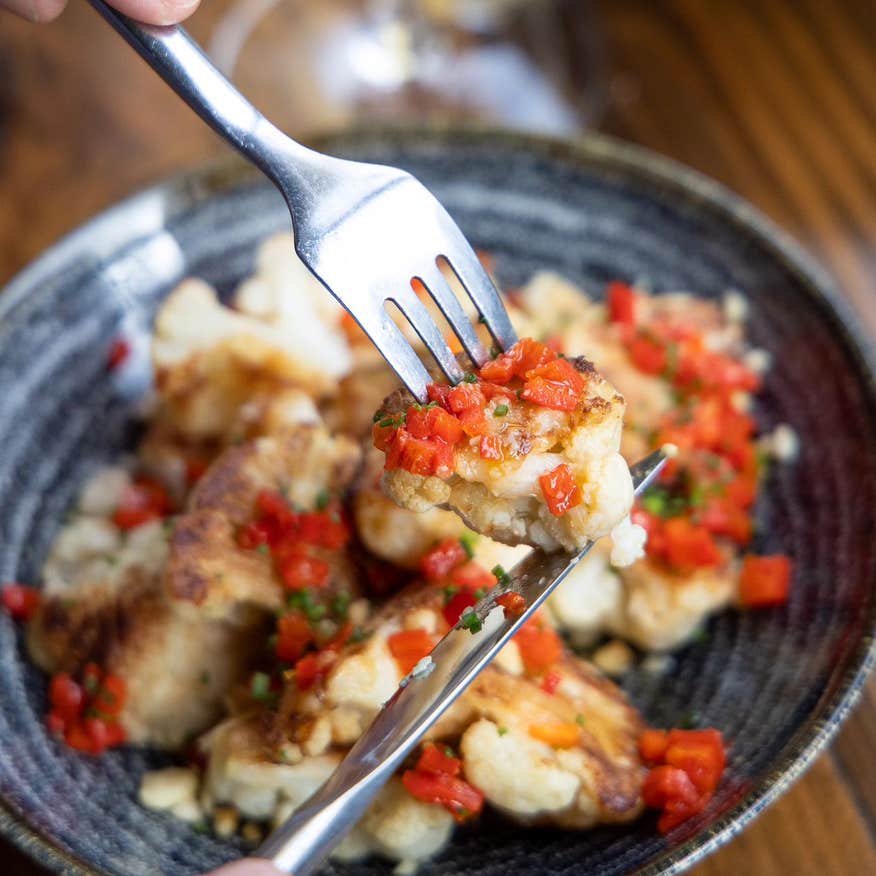
Photo credit: @cavagalway
Best pizza in town? Locals have their favourites, but Dough Bros on Middle St in the Latin Quarter and Monroe’s Tavern on Upper Dominick Street are always part of the conversation. They’re only three minutes apart on foot, so if you’re really keen you can try them both. Literally 100m from Monroe’s is Handsome Burger, which turns the humble hamburger into something approaching high art – and don’t forget their fully loaded fries.
And when you’re done, there’s always a pint and some music. You can take your pick from a bunch of superb pubs, but for proper atmosphere and some terrific trad sessions the Crane Bar in the West End is hard to beat.
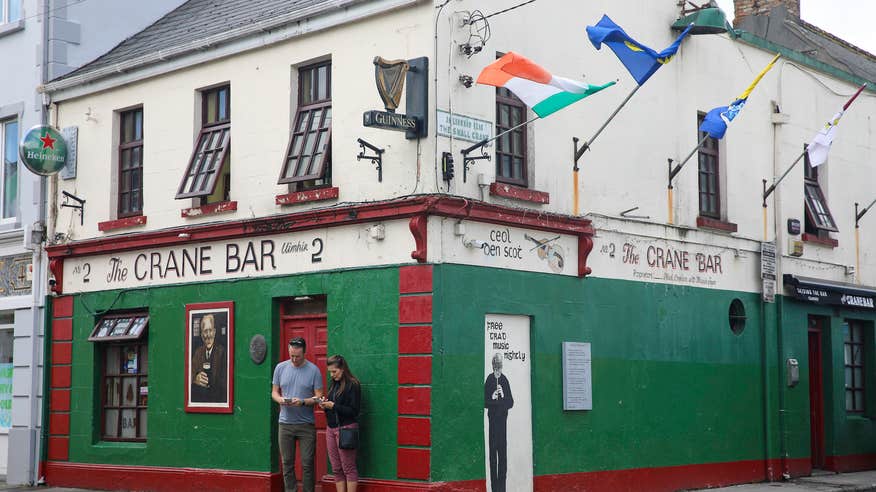
Get ready to plan your car-free day-trip to amazing locations like Kerry, Donegal and more.
